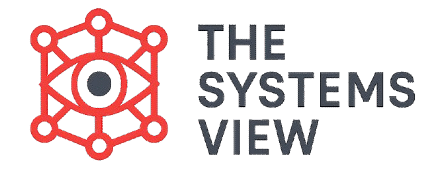Have you ever noticed how some people or teams seem to get better and better at what they do, while others stay stuck? The same thing happens with companies and groups. Some learn and grow, becoming stronger over time. These are often called learning organizations.
A learning organization is basically a group of people, like a company or a team, that is really good at learning and changing. They don’t just learn new things once; they keep learning, adapting, and transforming themselves. They use this learning to do better, solve problems, and create new things. This continuous growth makes them dynamic, much like a living organism.
Why Learning is Important for Organizations
Think about it: the world around us is always changing. New technologies pop up, customer needs shift, and competition gets tougher. If a business or group can’t learn and change, it will quickly fall behind.
Learning organizations are good at:
- Staying ahead: They can see new trends and act on them fast.
- Solving problems: They don’t just put out fires; they learn from them to stop them from happening again.
- Creating new ideas: By learning, people in the organization can come up with new products, services, or ways of working.
- Handling challenges: They are more flexible and can bounce back from tough times.
It’s not just about training employees. It’s about how the whole group thinks, shares ideas, and uses what it learns to improve every day.
Key Features of a Learning Organization
So, what makes an organization a “learning organization”? Here are some common things you’ll find:
Openness to New Ideas
People in these organizations are curious. They are open to trying new ways of doing things and are not afraid to question old methods. They see mistakes as chances to learn, not just failures.
Sharing Knowledge
Learning organizations make it easy for people to share what they know. This isn’t just about big meetings; it’s about everyday conversations, sharing documents, and having systems where knowledge can be stored and found easily. Everyone helps each other learn.
Reflective Practice
In a learning organization, people are encouraged to think about their experiences and learn from them. This means taking time to look back at what happened, what worked, what didn’t, and why. It’s like reviewing a game to see how to play better next time. This reflection helps individuals and the team truly understand their actions and improve.
Continuous Improvement
This feature means the organization is always looking for ways to get better, even when things are going well. It’s not about making big, sudden changes, but about making many small, ongoing improvements every day. This idea comes from constantly observing, learning, and then making adjustments to processes, products, or services.
Shared Vision
A learning organization has a clear idea of what it wants to achieve in the future, and everyone understands and believes in this goal. It’s a picture of what the organization wants to become that everyone helps to create and is committed to. This shared vision gives purpose to their learning and helps everyone work together towards the same exciting future.
Read : Peter Senge’s 5 Key Principles for Learning Organization
Systems Thinking as the Core Application
A learning organization is a direct application of systems thinking principles to the way an organization itself operates. Instead of just fixing one problem at a time, they use systems thinking to see the bigger picture.
- They understand that everything is connected. When a problem arises, they don’t blame one person or department. Instead, they look at how different parts of the organization or even external factors (like customers or suppliers) interact to cause the issue.
- They search for root causes by tracing problems through the interconnected web of their operations, rather than just treating symptoms.
- By thinking systemically, they can find leverage points – small changes that can lead to big improvements across the entire organization. They learn not just what happened, but why it happened within the context of the whole system, allowing them to truly adapt and improve. This holistic view helps the organization learn as a complete unit.
Important: A true learning organization doesn’t just collect information; it changes its behaviors and practices based on what it learns from its systemic understanding. This constant change and improvement is what makes it a “learning” system.
Encouraging Experimentation
These organizations aren’t afraid to try new things, even if they might not work perfectly the first time. They encourage people to experiment, test ideas, and learn from the results. This helps them find what works best.
Leadership That Supports Learning
Leaders in a learning organization don’t just tell people what to do. They create a safe place for people to learn, ask questions, and even make small mistakes. They lead by example, showing that learning is important for everyone.
Benefits of Being a Learning Organization
When an organization truly commits to learning, and particularly to applying systems thinking principles to its own structure and processes, it sees many benefits:
- Better Performance: The organization becomes more efficient and effective because it understands and optimizes its internal systems.
- More Engaged Employees: People feel more valued when their ideas are heard and they are encouraged to grow within a transparent system.
- Stronger Innovation: New ideas flow more freely when the system is designed to embrace change and new knowledge.
- Increased Resilience: The organization can adapt faster to changes and challenges in the market because it understands the dynamics of its environment as a system.
In short, a learning organization is like a living thing that never stops growing and getting better. It’s built on the idea that everyone has something to learn and something to teach, and that understanding the whole system is key to continuous improvement.
Conclusion
A learning organization is a powerful concept for any group that wants to thrive in a changing world. It’s not just about having smart individuals, but about how the entire group learns together, shares knowledge, and adapts. Crucially, it’s a profound application of systems thinking, allowing the organization to understand itself as a dynamic, interconnected whole. By focusing on continuous learning, sharing, and a systemic view, organizations can become more resilient, innovative, and unlock their infinite potential for success.


